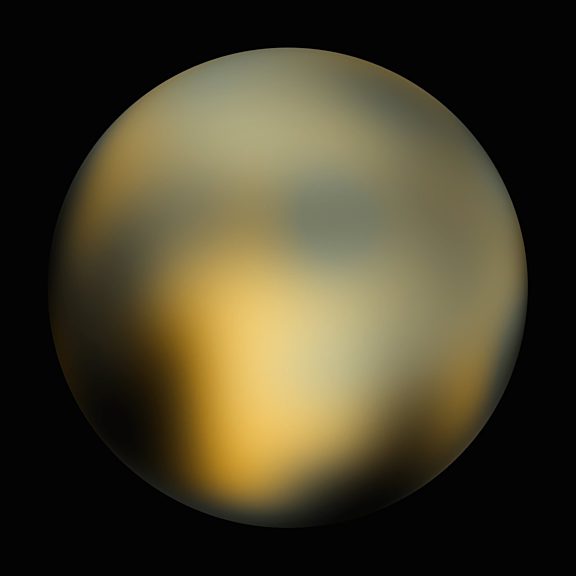Then & Now: Pluto
Left image:
This image of Pluto was created in February of 2010 using multiple photos taken by the Hubble Space Telescope. While Hubble allows us to see individual stars in distant galaxies with breathtaking quality, it still can’t make out details on this very small and distant world within our own solar system. At the time, and for several years thereafter, this was our best image of Pluto.
Right image:
This true color mosaic image of Pluto was composed by combining four images taken by New Horizons’ Long Range Reconnaissance Imager (LORRI) and processed with color data from its Ralph instrument. The original images were taken in 2015.
New Horizons is the first and only mission sent to study the Pluto system and Kuiper Belt. The astonishing data it returned revealed that Pluto is larger and less dense than we previously thought, with mountain ranges made of ice and diverse geology between the ranges. It revealed evidence of tectonics, glacial flow, and possible cryovolcanoes on Pluto and its moon, Charon. On January 1, 2019, New Horizons will make a historic encounter with the tiny, icy Kuiper Belt object, 2014 MU69.


 Explore Worlds
Explore Worlds Find Life
Find Life Defend Earth
Defend Earth



